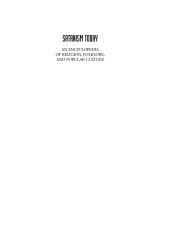I. VAMA MARGA Foundations Of The Left-Hand Path - staticfly.net
I. VAMA MARGA Foundations Of The Left-Hand Path - staticfly.net
I. VAMA MARGA Foundations Of The Left-Hand Path - staticfly.net
Create successful ePaper yourself
Turn your PDF publications into a flip-book with our unique Google optimized e-Paper software.
complex. Since it has frequently been wondered if there is any link between<br />
the leftwardness of the Vama Marg and the political designation "left-wing",<br />
we should first establish that there is no connection at all between the two.<br />
<strong>The</strong> specific numinous significance of leftwardness can be traced<br />
32<br />
back to man's earliest known religiomagical symbolism in ancient<br />
Mesopotamian Sumer, but seems to be an almost universal concept.<br />
Tellingly, the ancient Sumerians unfailingly spoke of "right and left" in that<br />
order, believing that it would invite bad luck to mention the left first. In the<br />
modern world, this idea survives in such superstitions as that of placing<br />
one's right shoe on before the left. Mesopotamian figurines of protective<br />
deities were always portrayed striding forward with the left leg, the better to<br />
move against the left-dwelling monstrous creatures that populated creation's<br />
shadow side.<br />
In Sumerian divination, the right side of the moon was thought to be<br />
fortunate, while the left was ominous. In this earliest of documented human<br />
civilizations, greetings, blessings and eating were always carried out with<br />
the right hand, which was associated with purity, a tradition that still<br />
survives in India. <strong>The</strong> Indian goddess Kali, the darkest spectrum of Shakti in<br />
her many-armed wrathful form, is most frequently depicted as making ritual<br />
gestures of blessing with her right hands, while brandishing a sword and<br />
decapitated head in her left hands – the simultaneously purifying and terrible<br />
nature of the sinister current.<br />
It has been speculated that the ancient association of right with good<br />
and left with evil may simply mirror the fact that most people are righthanded<br />
– a primitive assumption that what is normal must be virtuous, while<br />
what is unusual must be wrong. Parents whose children are born left-handed<br />
will often take measures to assure that this anomaly is corrected, or "set<br />
right". Shaking hands with the left hand is still actively avoided, even by<br />
people normally untouched by superstition. <strong>The</strong>refore, to deliberately turn<br />
left is to deviate from what would seem to be the body's natural course and<br />
tempt fate. Simply going left, when tradition tells us that right is the only<br />
way to go, is the first taboo violation of the left-hand path, the initial<br />
separation from the habitual inclinations of humanity.<br />
Symbolically, to incur upon one's self the powers of the left is to<br />
embrace the adverse side of existence instinctively shunned by the<br />
preponderance of humans. <strong>The</strong> left is the Other, the unknown, a direction<br />
that is everywhere known as the "wrong" way to go, in contrast to the welltrod<br />
path of the right.<br />
Many of the world's languages reflect this deeply rooted aversion to<br />
leftwardness. <strong>The</strong> modem English word "left" derives from the Old English<br />
lyft, which meant weak or palsied, connected to "leper", among other<br />
unpleasant associations. Another Old English word for "left" was winestra,<br />
which meant "friendlier". This word provides us with an interesting case of<br />
the magical use of words. By euphemistically referring to the feared left side<br />
as friendly, the speaker hoped to magically appease the destructive forces of<br />
leftwardness, a practice akin to calling a snarling wolf "nice doggy."<br />
<strong>The</strong> Latinate word "sinister", of course, suggests much more than<br />
33<br />
literal leftwardness – it carries distinctly negative connotations of its own.<br />
It's also a common synonym for the malefic, a meaning it has held since<br />
ancient Roman soothsayers first interpreted phenomena situated on the left<br />
(sinistrum) to be unfavorable omens. Those on the right (dexter, whose<br />
etymological connection with the Sanskrit daksina is obvious) were thought<br />
to be benevolent. No doubt the ancient association between the words left<br />
and sinister has increased the impression that the left-hand path is<br />
intrinsically evil.<br />
So, is the left-hand path only to be understood as one half of a
















